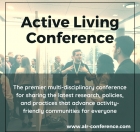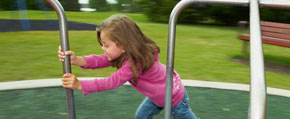We are pleased to announce an exciting new alliance between Active Living Research and GP RED to co-host and coordinate...
Associations Between Demographic Characteristics and Physical Activity Practices in Nevada Schools
Monnat, S.M., Lounsbery, M.A.F., McKenzie, T.L., & Chandler, R.F. (2017). Associations Between Demographic Characteristics and Physical Activity Practices in Nevada Schools. Prev Med. 95(Suppl), S4-S9.
Schools are important settings for not only providing and promoting children's physical activity (PA) but also for reducing PA disparities. We investigated associations between school-level demographic characteristics (racial/ethnic and socioeconomic composition, urban-rural status, and student-to-teacher ratio) and 16 PA-promoting practices in 347 Nevada public elementary, middle, and high schools in 2014. We found that low-cost and easy-to-implement practices are most prevalent. There is relative demographic equity in ten of 16 PA practices and significant differences in six PA practices in Nevada schools. Schools with comparatively larger percentages of Black students are the most disadvantaged, as they have the fewest PA-supportive practices in place. Higher percent black was associated with lower odds of providing classroom activity breaks (AOR = 0.632, 95% CI = 0.453–0.881) and bike racks (AOR=0.60, 95% CI=0.362–0.996), greater odds of withholding recess/PE for disciplinary reasons (AOR = 1.377, 95% CI = 1.006–1.885), and lower odds of having recess supervisors who are trained to promote PA (AOR=0.583, 95% CI=0.374–0.909). Schools with greater percentages of Hispanic students have lower odds of providing before-school PA programs (AOR=0.867, 95% CI=0.761–0.987), whereas schools with greater percentages of low-SES students have greater odds of providing after-school PA programs (AOR = 1.135, 95% CI = 1.016–1.268). Higher student-to-teacher ratio was also associated with greater odds of providing after-school PA programs (AOR=1.135, 95% CI=1.016–1.268). Urban-rural status was unrelated to all PA practices.
- DOWNLOAD "Associations Between Demographic Characteristics and Physical Activity Practices in Nevada Schools" PDF (0.23 MB) Research Papers
STAY UP TO DATE
RECENTLY ADDED TOOLS & RESOURCES
MOVE! A BLOG ABOUT ACTIVE LIVING
The "Active Living Conference" aims to break down research and practice silos and...







